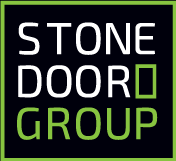Data center outsourcing (DCO) continues to fall. Gartner expects DCO market spending to decline to $45.2 billion in 2020. The report also forecasts that hybrid cloud will grow to $68 billion by 2020.
DD Mishra, research director at Gartner says, “As the demand for agility and flexibility grows, organizations will shift toward more industrialized, less-tailored options.”
International Data Corporation (IDC) predicts considerable growth in the cloud sector in the coming years. The report also noted that “… hybrid cloud environments are hot…”
Affirming the forecast, Maximize Market Research also predicts big things for hybrid cloud, forecasting the sector will be worth $102 billion by 2025.
We’ll discuss some of the top considerations for when a move to hybrid cloud could be appropriate, but first, let’s look at the different types of clouds.
Different types of Cloud
Private
Government agencies and financial institutions favor private storage. However, the private cloud is used by small and medium businesses as well as larger organizations.
Private cloud storage is only accessible by a specific organization or individual, and access is available online or through an internal network.
Each specific organization will have dedicated hardware and cloud storage space, rather than sharing it with others. Applications and infrastructure are managed privately.
Private clouds are a good option for an organization that wants a greater level of control over its data and IT infrastructure, but the management and maintenance can be time consuming.
Private clouds are hosted on-site or at a remote location, or a mix of both.
Public
Public clouds use a third-party provider through a web browser. Examples of these include AWS, Google, IBM Cloud, Docker, and Red Hat. The organization does not own any of the resources. Instead, the provider keeps ownership of the hardware, software and any supporting infrastructure.
Rather than having sole access, the organization or individual will share the same hardware, storage space, etc. as others.
Hybrid
Hybrids combine the benefits of both public and private clouds. The main advantage of hybrid cloud storage is the level of flexibility and scalability.
Hybrid clouds allow you to keep restricted information secure by storing it in a private cloud. An organization then has the option of outsourcing sensitive data or larger volumes to a public cloud.
In the following section, we will look at the top three reasons for when to consider using a hybrid cloud. This includes compliance, cost, and cyclical business demands.
Legal and regulatory compliance
Staying ahead of data restriction is always a fine balancing act because data restrictions vary from country to country, and in different regions. This means each country will have its own legislation regarding the movement of data. For instance, the E.U. recently introduced the General Data Protection Regulation (GDPR) while the U.S. has a different set of regulations regarding the sharing and location of data.
Likewise, complying with country-specific regulatory compliance can make data handling more complex than it needs to be. Organizations struggling to keep up with these ever-changing regulations might find that hybrid cloud storage could be the best solution.
Hybrid solutions enable compliance by giving an organization added flexibility. For instance, businesses can choose a specific location to store data and hardware, ensuring that it complies with these laws. However, it is important to remember that protecting data and overseeing safe management remains with the individual organization.
Regular cyclical business demands
For most businesses, workloads will often vary. This might be for several reasons, but seasonal changes or new product launches can impact many companies’ workloads throughout the year.
During these times, the need for manpower and resources is likely to increase. Using hybrid cloud storage allows companies to expand their resources as and when needed. They can gain access to server space, software applications and hardware without the need to invest large amounts of money into IT infrastructure.
In addition, managing temporary manpower becomes much easier with automation as collaborations and access to documents and software can occur using cloud technology. This makes the company more agile and responsive during times of high demand.
Cost savings
A major deciding factor in switching to hybrid cloud is the long-term cost savings when compared to other types of cloud solutions. There are several ways where an organization could save money (which we discuss below). One of these is orchestration. For this task, tools such as Red Hat Ansible and CloudForms can work together to allow the orchestration/automation of repeat processes
Orchestration
Orchestration allows the automation of multiple processes at the same time, allowing the efficient deployment of software. For example, developers often wait days to get access to development environments because virtual machines need to be provisioned, software installed, and integration testing performed. With automation, all these tasks can be committed to templates or stored in a container library and spun up in seconds. Developers can then spend their time building software instead of waiting for resources.
In a Forrester infographic on the value of hybrid clouds, successful cloud strategies include a combination of both public and private cloud: the hybrid cloud enables organizations to access vital technologies, improve IT infrastructure management and flexibility as well as improve security and compliance.
There are other potential cost savings, too. The first is when a business wants to change providers. It can save costs as it can keep critical data stored privately in its original format. In addition, when a network failure occurs, an organization with a hybrid cloud solution would keep access to its critical data, reducing the risk of costly downtime.
Hybrid cloud solutions can also save money when it comes to disaster recovery and are more cost effective than managing cloud solutions in-house. Gartner’s Mishra adds that organizations switching to hybrid will reduce costs and enhance efficiency.
NEXT STEPS
Stone Door Group is a modern cloud and DevOps solutions integrator with a bench of certified AWS, Azure, and Google Cloud Platform consultants. Stone Door Group offers its Cloud Cost Optimization Accelerator offering. This offering helps CFOs reduce the cost of their cloud consumption through the creation of a Cost Reduction Plan (CRP) and Cost Reduction Goal (CRG). Through executive coaching and technical implementation, Stone Door Group will systematically reduce the monthly public cloud costs for enterprises of any size.
ABOUT THE AUTHOR
Mike McDonough is a Senior Red Hat Architect with Stone Door Group and is responsible for designing and blueprinting OpenShift and Ansible architectures for Fortune 500 customers spanning a broad array of Red Hat technologies. With a 25+ year career in enterprise IT, Mike has deep experience in cloud architecture, automation, performance tuning and information security. He is also the architect of the Cloud Cost Optimization AcceleratorSM offering. To learn more about how Stone Door Group can help control your cloud costs, email us at letsdothis@stonedoorgroup.com or download a data sheet.



